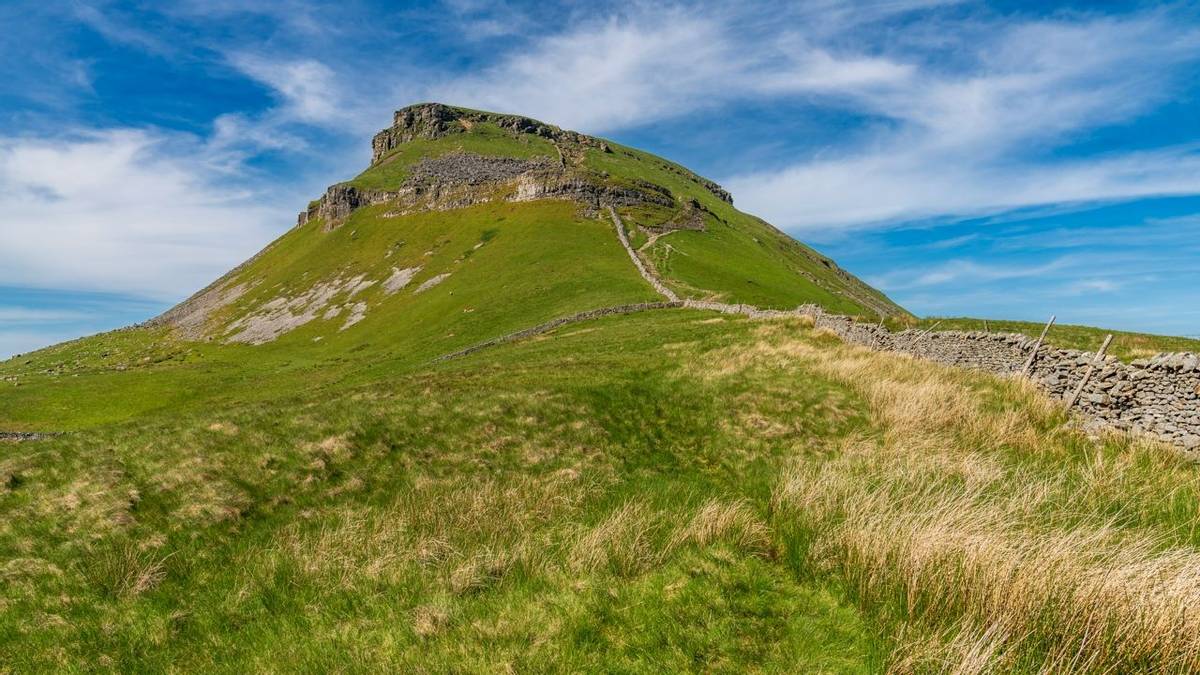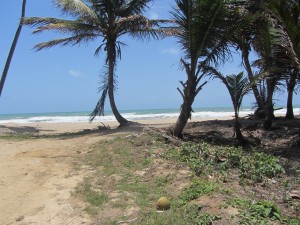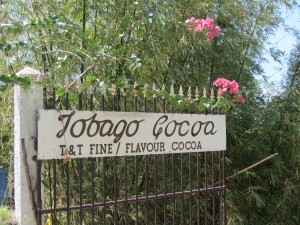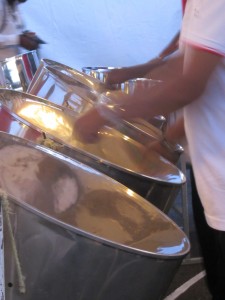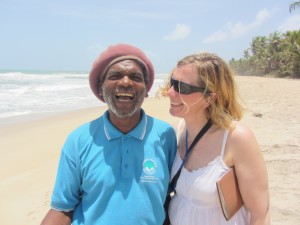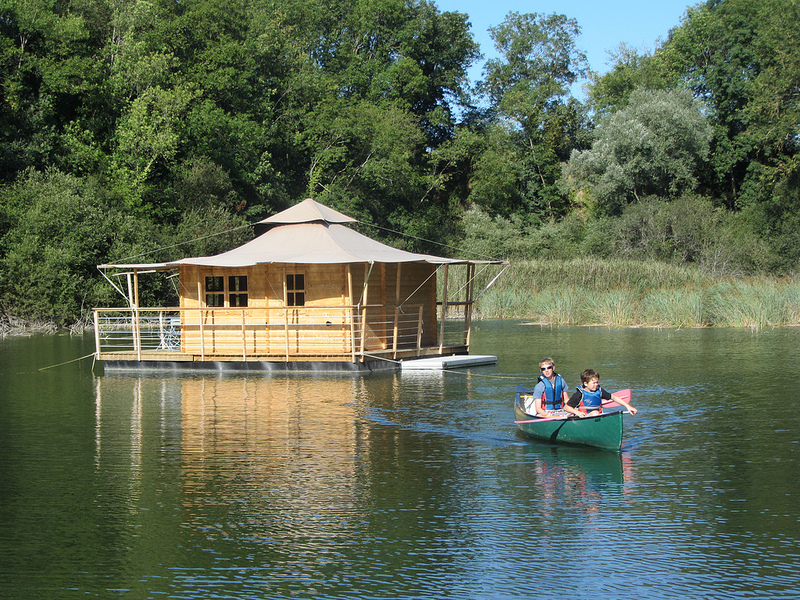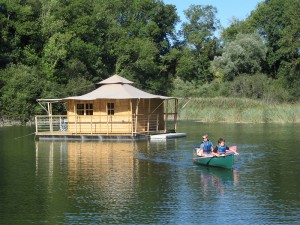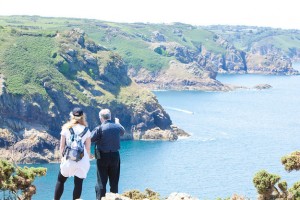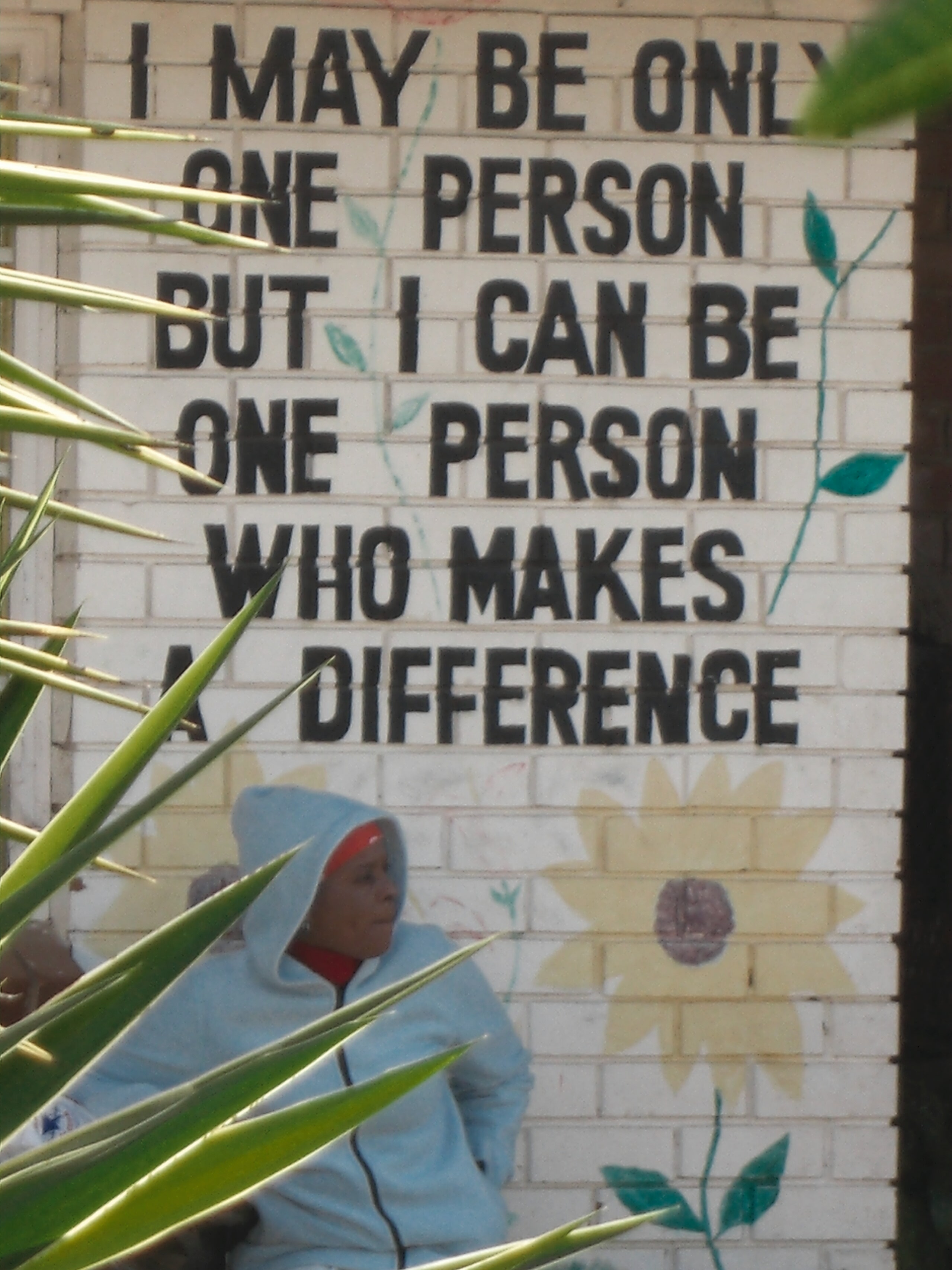Long before the words ethical or eco started creeping into the tourism industry’s boardrooms, there was one man who was quietly laying the foundations of fairness in travel. Thomas Arthur Leonard (or TA as he was known) founded HF Holidays in the UK a hundred years ago and it is still one of the leading providers of walking holidays in the UK and Europe. Although TA’s achievements have been relatively uncelebrated to date, the centenary of an organisation which still remains the only UK holiday provider that is a truly co-operative society, gives us a good opportunity to take stock of this pioneering philanthropist’s achievements.
Continue reading “HF Holidays – fine fellows celebrate a hundred years of outdoor holidays”Trinidad and Tobago – Sustainability with a Smile
“They don’t like tourists in Trinidad, you know, but I’m sure it’ll be interesting anyway” a neighbouring passenger told me as he got off the London to Trinidad flight at its brief stopover in Tobago. It left me somewhat speechless as I waited for the plane to prepare for take-off again to my final destination of Port of Spain, Trinidad’s capital. A few hours later I was sitting in a press conference with the Minister of Tourism for Trinidad and Tobago, and it was tempting to share this exchange with him, but I thought it might be best to go gently with four more days of the 14th Annual Caribbean Conference on Sustainable Tourism Development (April 2013) still to go.
The Honourable Stephen Cadiz is unlike many other tourism ministers, relaxed, in an open neck white linen shirt, personable, informal, and refreshingly honest about the challenges ahead in putting Trinidad on the tourist map. He confirmed what was immediately evident en route from the airport to the impressive Hyatt Regency Hotel, located on the water’s edge of Port of Spain. Trinidad is an industrial nation, with an economy based on years of exploiting oil and gas reserves. As we looked out at the bay, peppered with freight ships, Cadiz gave us the facts: “55,000 people are engaged in the manufacturing industry here, accounting for $1billion GDP. However, that accounts for only 5% of employment. And, at the moment, tourism still only provides 6% of GDP in Trinidad and Tobago.” He also stressed that, unlike other Caribbean countries, all inclusive enclave tourism is not the right direction for Trinidad, stating that “all-inclusive enclave can’t be sustainable. In Trinidad and Tobago 70 cents of the tourism Dollar remains on our islands. The average for the Caribbean is 55cents, some territories as bad as 10 cents. I want to be able to go to 80 cents on the dollar. Now you are talking true sustainability. And you can’t do that with the all-inclusive enclaves”.
Cadiz admitted that the time had come to move away from a non-renewable energy dependent economy and that, to date, their natural and cultural heritage reserves remain unexploited for tourism purposes. “At the moment, Tobago is our leisure market destination”, continued Cadiz “as a place for just chillin’ and sittin’ down on the beach. Then twenty miles away is this crazy place called Trinidad. We have our Carnival, of course, but now we have to start creating, branding and marketing an all- year-round product”.
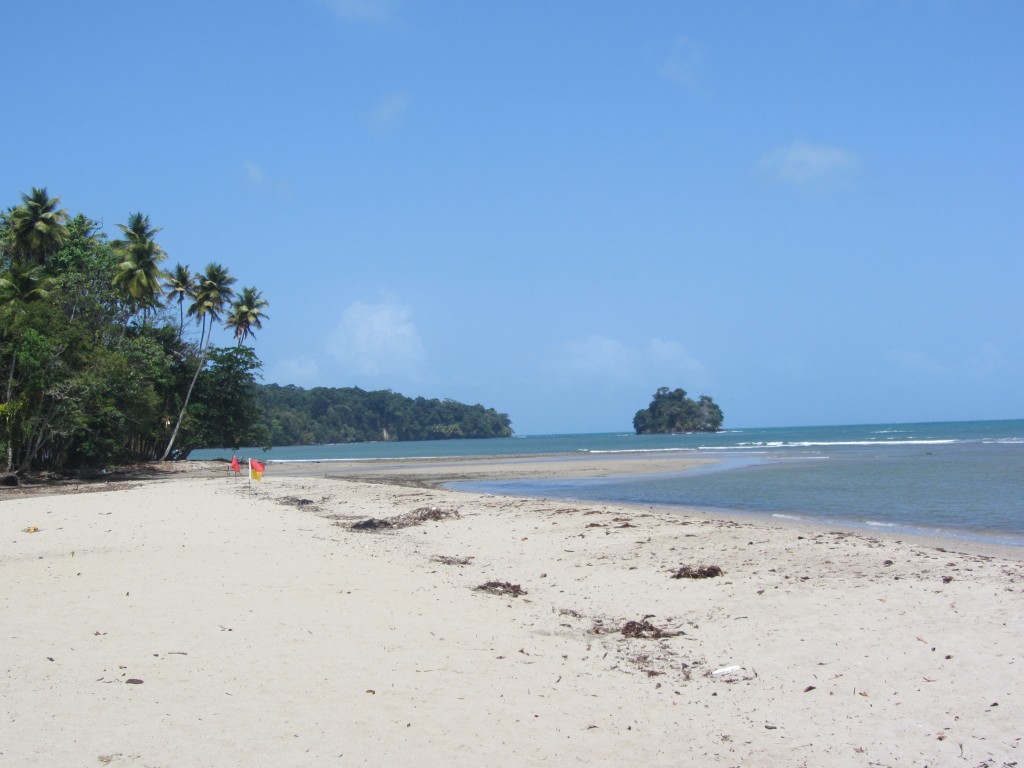
When questioned about the tourism product potential in Trinidad, Cadiz referred to the ecotourism opportunities in the North, with hiking, waterfalls, cocoa plantations and fecund turtle nesting beaches. The South of the island is home to the 150 acre La Brea pitch lake, not your traditional tourist attraction, admittedly, but fascinating to many, as the largest natural deposit of asphalt in the world. The East coast boasts acres of coconut plantations and is home to a well-integrated cultural mix of Hindus and Catholics. From this, the country boasts a rich history of food, music and ritual which tourists relish every year at Carnival, but are not valued as fine, experiential products for the rest of the year. “Local people tell me that Trinidad can never build a tourism industry”, says Cadiz, “but I say absolutely we can. People have no idea of what they have here and that tourists want to see it. It’s about taking what we do naturally every day and making a tourism product out of it. This is where we have missed the boat”.
Over the next few days at the Conference, it was clear that Trinidad has not missed the boat, however, but was just starting to build it. An evening at the Phase 11 Panyard, home to the reigning champion of the island’s annual Panorama competition for steel pans, was our first immersion in community culture and tourism. This is just one of many community panyards throughout Trinidad, home of the steel pan, and it is impossible not to be totally enthralled by the beat of the island’s home grown sound and national instrument. Their rendition of Moon River, the smell of Doubles stalls wafting through the air, washed down with a Rum and LLB (Lemon and Lime and home-grown Angostura Bitters) cocktail, was the perfect cultural cocktail for any visitor to this welcoming neighbourhood. Closely followed by calypso performer, whose ingenious improvised song about sustainable tourism got the message across quicker than any Powerpoint or pie chart. I suggested to Minister Cadiz that he bring him to the World Travel Market. After all, Trinidad and Tobago is the home of Calypso, and if anything can make sustainability sexy, this Calypsonian can.
Trinidad and Tobago’s natural heritage is at its most harmonious on the turtle nesting beaches, however. Conservation and protection of these precious areas is currently in the hands of Turtle Village Trust, (TVT) an NGO specialising in turtle conservation. TVT acts as an umbrella group for all the community turtle conservation projects that have developed in Trinidad and Tobago over the last twenty years. Its Executive Director Dr. Allan Bachan presented at the Conference and described his organisation as “a unique model, where private, public sector and communities have come together to expand in the region. A region which has the highest number of sea turtles in the Western hemisphere”.
Turtle beaches have gone from having 2500 visitors in 2000 to over 21000 visitors today, and you can only visit them with a guide working for the Trust during the turtle season. During that time 80% of Trinidad and Tobago’s villagers are employed in turtle conservation and tourism. “But we need to balance development and conservation of national resources”, Bachan added, something which was more than evident at Matura Beach, which I visited a couple of days later. It was a daytime visit, and so there was no sign of the hundred or so leatherbacks which had visited this seven mile sandy stretch the night before. At Matura the beach is patrolled and protected by one of TVT’s community organisations, Nature Seekers and, under the wonderful guidance of Francis Superville (listen to my quick chat with him here) who has seen this community change from poachers to protectors over the last generation, we saw turtle trails and learned about their reforestation programme which ensures the sustainability of these swathes of Galba, Olivier and Lay Lay trees, to name but a few, which line the white sands of this luscious northern coastline.
What doesn’t line the sands in Trinidad and Tobago, however, is evidence of protection at government level. How much longer can local communities, paid by funds raised by an NGO from organisations like BP (ironically) be expected to work in good faith and for little money, just for the love of it? Matura Beach, as well as many others, has Environmental Sensitive Area status, but as yet there is no National Park in Trinidad or Tobago. This must surely be the first step in putting real faith into its sustainable tourism product, enabling not only a future for its flora and fauna, but a guaranteed income for those who have worked round the clock, and with little investment, to keep the resources alive to date.
When I asked Minister Cadiz when Trinidad and Tobago might see a sustainable tourism policy put in place at government level, he said that a draft was due to go to stakeholders for consultation. I couldn’t help wondering if the likes of Francis at Matura Beach, Christiana Gabin, our seventy year old guide at the Tobago Cocoa Plantation, Kelly and Carl Fitzjames at Brasso Seco Paria Eco Community, Elton Pouchet of In Joy Tours who organised our memorable panyard excursion, Andrew Welch of Banwari Experience which leads tours crossing all cultural aspects of Trinidad and Tobago, Courtenay Rooks who not only leads hiking tours to Paria Springs but is also President of Trinidad and Tobago’s Tour Operators Association were on that list of stakeholders. I certainly hope so, because although none of these was presenting Powerpoints to the hundreds of international delegates visiting their country, they are all making their mark on the ground, for sure.
There is no question, however, that when chatting to these all these individuals working in Trinidad’s nascent tourism industry, be it at government or grassroots, there is a genuine commitment to sustainability. And, as for liking tourists, well, let’s look at their national food as the perfect analogy. Because just like the famous Double, Trinidadians wrapped us up tight in a warm and spicy cocoon of deliciousness for a few days, leaving a lingering taste and a thirst for more. And as long as the environmental and tourism authorities protect and value the ingredients and the chefs, this country will be cooking up an a la carte menu of locally produced sustainable and quality tourism products which will bring a smile to every guest’s face.
But will it make the hosts smile too? Can we make people actually like tourists? Tourism Minister Stephen Cadiz summed it up perfectly, saying “I don’t have to teach people how to smile here. We do it naturally. One of the traits that Trinidad has is that we understand what it is to laugh at our own selves. We do that very easily….that is half the fight in building a tourism business – we, as a people, are who we are. What we don’t understand, is the value of what we have. Because that is what the real traveller wants to see. And that is what I am trying to explain to Trinidad and Tobago. Be natural.” For a full version of Catherine’s one to one interview with Minister Cadiz, click on Youtube screen below.
For more information on Trinidad and Tobago, see the official website. Go Trinidad and Tobago.
How do I find the words?….
We al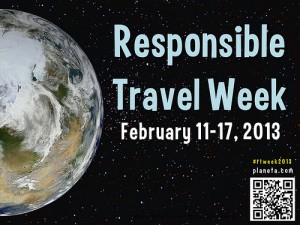 I love the choice of words that Ron Mader, editor of Planeta.com, has used to guide us through this year’s Responsible Tourism Week, an online conference which was created by Ron himself. Every day he used a new theme, teaching us to be Attentive, Generous, Creative, Empathetic, Curious and Grateful while immersing ourselves in the world of travel, whether we are hosts, guests, writers, photographers, publishers, tourist boards, activity providers etc.
I love the choice of words that Ron Mader, editor of Planeta.com, has used to guide us through this year’s Responsible Tourism Week, an online conference which was created by Ron himself. Every day he used a new theme, teaching us to be Attentive, Generous, Creative, Empathetic, Curious and Grateful while immersing ourselves in the world of travel, whether we are hosts, guests, writers, photographers, publishers, tourist boards, activity providers etc.
I am always bowled over by the personalities I meet on my travel writing expeditions. They demonstrate the practice of these key words throughout every aspect of their businesses and so I am taking this opportunity to celebrate them. Please visit their websites, follow them on Twitter or Facebook, spread the word about them, and use them as case studies to inspire others to act the same way. Or, if they have businesses which are open to guests, just go visit them. They will all be glad to say hi, I am sure.
- Attentive – One of the most attentive people I know is Valere Tjolle, a UK based sustainable tourism consultant with Totem Tourism and Sustainable Travel editor at Travelmole. Anyone who has been lucky enough to meet and chat with Valere in detail about the issues of sustainable tourism will know that there are few more attentive people than him. He talks and writes about sustainable tourism in a way that steers clear of academic bluff, he has no hidden agendas, he has been working in tourism for long enough to see responsible tourism go from niche to norm, back to niche and then to a place which lies strangely in between the two. When hearing about worldwide tourism projects he is attentive to all the details, highlights them on Travelmole for all of us to read. He listens to everyone’s stories, asks all the right questions and pushes the envelope when questioning tourism leaders. His attentiveness means that many people, who wouldn’t normally be given one, have a voice. He has also decided to extend his already busy life into a tour operator business, just launched this week, bringing tourists to the wonderfully undiscovered region of Romagna in Italy . Still in its infancy, Watch this space , Best of Romagna, for more details.
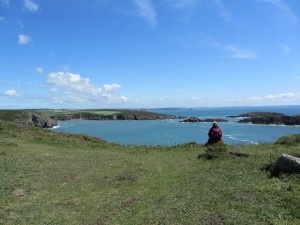
Pembrokeshire coat path between St justinian’s bay and Porth Clais - Generous –Having walked on The Wales Coast Path a lot, one of the most glorious long distance walking routes in UK, I was struck by the generosity of landowners who are happy to share their space with tourists. I stood on the Pembrokeshire coast after walking from headland to headland all day, looked out across the water and thought how amazing it would be to walk the whole coast of my native Ireland. But sadly it isn’t possible, due to land access issues. This is the same in so many countries, but in Wales farmers and other land owners have opened up paths for walkers, albeit in exchange for a small remuneration, meaning that not only can you now walk the length of the coast of Wales, but around the whole country as the Coast Path now links up with the Offa’s Dyke Long Distance Trail which follows the inland border with England route for 285kms. All thanks to the generosity of strangers.
- Creative – This is a tough one as creativity oozes from every project I visit, but I think Echologia in the Mayenne region of France wins my creative prize this year.Apart from their website, that is, which has a way to go, but I forgive them as they have put all their creative energy into their stupendous eco set up. The proper name is actually EcH20logia, because this extraordinary 70 hectare site revolves around water, ecology and lodgings, with three disused limestone quarries offering natural gems of a getaway now that their underground water sources have been allowed to seep back up to the brim again. Poised in and around these teal coloured water holes are a collection of twenty different places to stay, from yurts spread across a wild meadow, tipis within diving distance of the natural reed filtered swimming pool, cabins poised among the trees which overhang the waters or two cabins which float serenely in the middle of one of the basins. And all the creative vision of a group of local men and women who wanted to bring this dead space back to life again. Their vision is Zen like, but not in a purist, whispering way. It’s just about chilling in nature really and their act of replacing a loud, industrial space with something so natural is worthy of praise.

- Empathetic- This is a tough one, but when I get a room full of food producers and tourism providers who just thrive on local sourcing, I really start to feel the love. Connecting tourism with local producers is when responsible and ethical tourism starts to kick ass. There are so many tourism businesses which go the extra mile to ensure that they source their food locally, totally empathising with the farmer down the road and working hand in hand to create the most deliciously local experience. In Ireland, John and Sally McKenna’s Guidebooks , Best Restaurants and Best Places to Stay not only capture all the flagships of local produce in Ireland, but are written with total empathy and love for everyone mentioned in the book. Organic Places to Stay website has a wonderful selection of places to stay all around the world, which use organic and local produce. I am totally in love with the small island site, Real Island Foods on the Isle of Wight just off the South coast of England, where you can order all your local produce before you arrive, so that it is waiting at your self-catering accommodation when you arrive. Surely a model to emulate in other small destinations? Other websites in the UK which promote the food of love include farmison.com which has a plethora of farm to fork food and bigbarn.co.uk which is a great short cut to finding local producers on your travels. Just enter a postcode to find your nearest market, farm shop, artisan producer etc. Please feel free to comment on this below if you have found similar food tourism networks around the world, so that I can spread the word, and provide the ultimate feast of tourist sites with local food at

John and Sally McKenna’s Guidebooks to Ireland their core
- Curious – Well, I guess I have to come back to travel writers for this one. The people who love to dig and delve, but who also put responsible tourism at the heart of their work. Twitter has been a wonderful way for all of us to communicate and share ideas, and so here is a shout out to some of my favourites. Gail Simmons (@travelscribe) writes about the Middle East with great wisdom and sensitivity and has been Highly Commended at the Virgin Holidays Responsible Tourism Awards twice. She has introduced me to the wonders of Palestine and the exciting tourism developments happening at The Siraj Centre . Caroline Eden (@edentravels) works a lot in Asia and was also Highly Commended at the Virgin Holidays Responsible Tourism Awards 2012. Matthew Teller is also rather brilliant on the Middle East, and is a wonderful commentator on Twitter too. Kevin Rushby is The Explorer for The Guardian newspaper and he is, basically, just too cool for school and I am at my greenest when reading his work….with envy that is! Richard Hammond of the UK’s Green Traveller website wrote the green travel column in The Guardian for years and then went on to found his website, which features hundreds of green holiday ideas all of which are accessible by train. He also has a writers’ blog on his site which he contributes to regularly as well as a team of other writers. Such as Paul Miles who lives on a houseboat and so no better man for writing about slow travel and slow living (@Travel_n_green), Rhiannon Batten – the author of Higher Ground: How to travel responsibly without roughing it, and also regular feature writer for The Guardian and The Independent in UK (@rhiannonbatten), and Jeremy Smith who is former editor of The Ecologist magazine and starting to write a lot about wildlife conservation via his blog Fair Game and on Twitter @jmcsmith.

The Wild Places by Robert MacFarlane Jini Reddy is one travel writer I would love to travel and work with one day. She just seems to sing from the same songsheet as me, as you can see just from her trip portfolio, which includes a canoe trip along Botswana’s Selinda Spillway and taking tea with the women of Pakistan’s pagan Kalash tribe (@Jini_Reddy). And last, but not least, Leo Hickman, environment editor for The Guardian newspaper in the UK, who also wrote the wonderful book on responsible tourism – The Final Call. He is also very active on Twitter, so follow and fall in awe, like I do every time I read his fine pieces of journalism, such as this recent one on flying and climate change. And to conclude, the Saint of all travel scribes, Robert Macfarlane , whose books seem to glow on my bookshelves telling me to pick them up and read them again and again. If you haven’t treated yourself already, check out the ever curious compositions of this extraordinary travel writer in The Old Ways: A Journey on Foot (2012), The Wild Places (2008) and Mountains of the Mind: A History of a Fascination (2003)
- Grateful –Well, asI get to share Tweets, cross paths and go on journeys with nearly all the above, who else could be more grateful than me, of course?
With thanks to Ron Mader and all the participants of #rtweek2013 and #rtyear2013, as well as all my fellow travellers.
Volunteer Tourism – needs to go viral, not parasitic
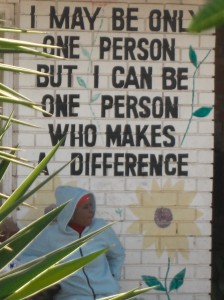
At the last view, 415 people had watched the debate which took place at the World Travel Market in London in November 2012 on volunteering tourism on YouTube. Not exactly viral. However, if you are one of the million people who are thinking about using your valuable holiday time and money to volunteer next year, I highly recommend taking an hour of your time to watch this panel discussion about one of the fastest growing sectors of tourism which, to date, is still unregulated. Also, you could then prove one major player in the industry wrong. Richard Oliver, Chief Executive of Year Out Group, an association of leading gap year providers, responsible for sending 24000 young people abroad during 2011, claims that ‘For the volunteer, research and planning is essential …. and I have to say that young people don’t do it very well…. I am routinely disappointed that parents don’t get involved at least to take a discreet interest in what their children are doing…when things go wrong, parents are the first to jump on the bandwagon’ .
Year Out Group does not organise volunteering tours per se. They represent other organisations which do, and there is indeed a wealth of information on their site for volunteers to sift through, including a long list of questions that you should ask a gap year or volunteering holiday provider in order to get a clear picture of the work you will be getting involved with. There is also a Code of Conduct and Year Out Group’s members must ‘provide annual confirmation that they continue to meet these criteria’.
The criteria which volunteering holidays must meet in order to feature on Year Out Group’s site include guarantees on financial security for their clients, accurate websites and literature, professional support and welfare which ensure that all programmes are vetted and monitored by member organisations and that security and safety procedures are in place (all of which are basic legal requirements anyway, surely?). As well as this, member organisations agree to adhere to ethical considerations, albeit down at the lower end of the Code’s List of priorities. These include protecting the environment, respecting local culture, benefitting local communities, conserving natural resources and monitoring pollution.
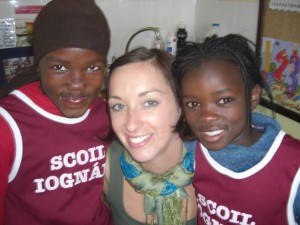
All great on paper, but with no actual obligatory regulation, bar the British Safety Standard BS8848 for group activities which may not apply to certain volunteering holidays anyway, the thing which ‘routinely disappointed’ me was not the fact that parents didn’t do their job, but that Year Out Group which represents all these volunteering holidays doesn’t do thorough checks on their babies. According to Oliver, “Ethical issues are important but with so many activities in so many countries it has not been possible for Year Out Group to audit and we therefore do require the individual volunteer to do a considerable amount of research and planning for themselves to check out the organisation and to check out the individual project”.
Oliver goes on to emphasise that the young internet generation is only interested in “instant response”, and “this doesn’t work for international volunteering” and that as a result these volunteers are, again, ‘routinely disappointed’ and that ‘the provider is disappointed too because they’d like to be able to help but can’t’. And yet, somehow it is acceptable for volunteering associations, of which there must be many around the world at this stage, to use the internet to promote thousands of volunteering opportunities, so many in fact that they don’t have time to audit and who claim that the best auditors are the volunteers. But hey, when in doubt – blame the parents.
Another of the key speakers, Paul Miedema of Calabash Tours, an organisation working in urban townships of the slums of Port Elizabeth in South Africa does not blame the parents however. He goes to the core of the matter by waking tourists and tourism providers up to his reality saying, “I am pretty annoyed at some of the volunteer tourism practices taking place…it seems to be the belief that we can be the play thing of people that come from the north and come and play with us in the south, have a wonderful experience and go home…. some of us are then left to pick up the pieces”. As Miedema points out, it is a lot more complex than that, and with a big boom in volunteering tourism happening worldwide at the moment “everyone is scrambling around looking around for projects, because that is what they need to sell’. He stresses the need for well-structured community centred volunteer experiences with deep insight into the local context, adding “We need to go about it the other way round, in my view. What are the needs of the local people is the starting point” and stresses that volunteering holidays “are not about selling a beach package. A lot of the work I do is about bringing people to people….creating a shared humanity’.

There is a clear contrast in outlooks here. Year Out Group is very volunteer centred, emphasising the CV credits that a young person gets for volunteering, assuring parents on their website that “Volunteering in a community overseas helps to develop valuable life skills, which can set young people apart when applying for universities and jobs” and which “enable young people to develop their soft skills, broaden their education and develop a wider perspective on life.” Whereas Miedema talks about Calabash’s process with much more of a community focus although not denying the importance of volunteer safety; “It is our responsibility to educate the communities about what the potential risks of this are, so that they can agree to do this as a community. What are the rights of children or vulnerable adults within these communities?”
Miedema also points out that in October 2012 a US volunteering organisation Peace Corps volunteer was imprisoned for fifteen years for sexually abusing children in an AIDS centre for pre-school age children in South Africa. “This is happening more than we want to admit”, says Calabash, “ It is our dirty little secret and it’s time we open that up and talk about it and talk honestly about that, and talk about the risk to volunteers but also to the communities”. And with a passioned plea, Miedema sums up by saying “Too much of what I see around me benefits only the volunteer… If you can’t do it in your own country, why do you come and do it in mine? If you are eighteen years old can you teach English here in a class? Can you work with children here in England without a CRB screening? Why do you want to do it in my country? Just because we are vulnerable? Just because we are in need? If you can’t do it at home, I don’t want you to come and do it with us.”
And so with a growth sector comes grave concerns. Sallie Grayson, co-founder of UK organisation People and Places, which was awarded the Best Volunteering Company at the Virgin Holidays Responsible Tourism Awards in 2009, is equally frustrated with the desperate need for change in the industry, saying that ‘The big boys need to stand up and take responsibility of what is going on in the volunteering market” in her presentation. People and Places’ rules are simple and clear when it comes to volunteering holidays : They take their time to match volunteer skills with specific community led projects and these are always projects which already exist, and are not volunteer dependent; they carry out criminal record checks and work closely with all their project providers in situ to ensure that the volunteer role is genuinely necessary; they guarantee to her volunteers that their role is not simply a money making exercise which may, in the worst scenario, put a local person out of a job and, they are totally transparent about the percentage of the volunteer’s money which ends up in the community. And so consequently, she has serious doubts about volunteering organisations which offer discounted, last minute trips due to the fact that serious project and volunteer liaison is simply not possible in such a short time.
There has been no major expose of the volunteering industry within the media to date, with the exception of a superb documentary People and Power: Cambodia’s Orphans Business by Al Jazeera on child trafficking in Cambodia in May 2012 (see below). You can watch this on You Tube too, and interestingly it has had over 30,000 hits so far, although considering the fact that it exposes the vast profits being made by US volunteering organisation Projects Abroad, as well as its shabby practices in terms of fundamental child protection, informed consent in the community, transparency and project supervision, this film should be viral by now. But nothing is viral yet in volunteering tourism yet, it would seem, as so much of what really goes on is being kept under wraps. It is time to get the message spreading, volunteers speaking about their experiences, governments reacting and acting, and the media talking. That way, we can get the responsible volunteering message viral, and in so doing, stop the industry from becoming totally parasitic.
For more information see Better Volunteering and Better Child Protection as well as the ongoing work of the International Tourism Partnership and Tourism Concern. There are also some very interesting comments in response to this post below, and in particular those from the team producing the voluntourism documentary, Hope was here, which you can find more about, including its superb trailer, if you click here.

